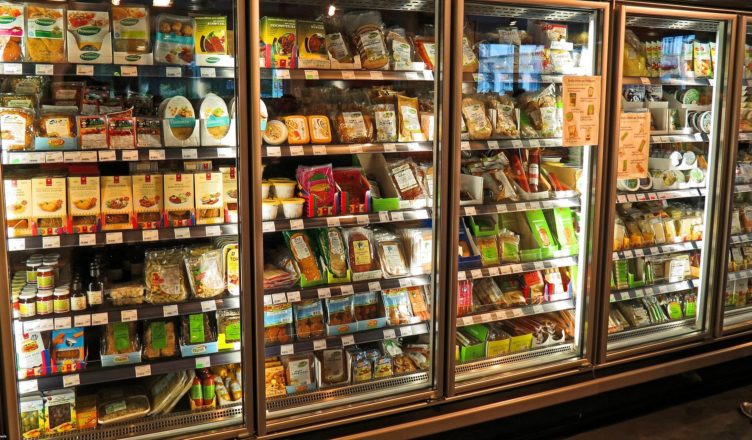In truth, we simply can’t think of living our daily lives without electricity. With the refrigerator working, preserving food, even at the peak of summer, is easy. But you can not rely on the grid supply or the fuel supply for a generator during an emergency. So, many preppers may be wondering how to keep food cold without a fridge?
The answer might surprise you and yes, you can keep food cold. In fact, methods of refrigeration existed in human society long before we became dependent on electric power.

Today, we will focus on some of the most effective methods for keeping food cold that can be easily used in times of emergency.
Make a Zeer Pot
This is a simple but efficient way of keeping food cold based on the principle of evaporative cooling. Note, various versions of the device have been used for thousands of years, especially in the hot and dry regions of the Middle East and Africa. Here we will discuss one of the simplest forms.
To start with, you’ll need two unglazed ceramic pots. One of the pots should fit inside the other. Other than that, you will need some sand and water.
Firstly, the bottom of the larger pot should be filled with some sand. Next, place the smaller pot inside the larger pot. Fill the gap between the two pots with more sand and pour the water into the sand to make it wet. Lastly, cover the pot with a piece of wet cloth or towel.
The basic setup of the Zeer pot is done. Now, you can start storing food items inside it. Make sure to keep the sand wet as this is the water that evaporates and keeps the pots cold. Place the pot in the shade to prevent heating from the sun’s rays. Keeping it in a windy area will also assist the process of evaporation.
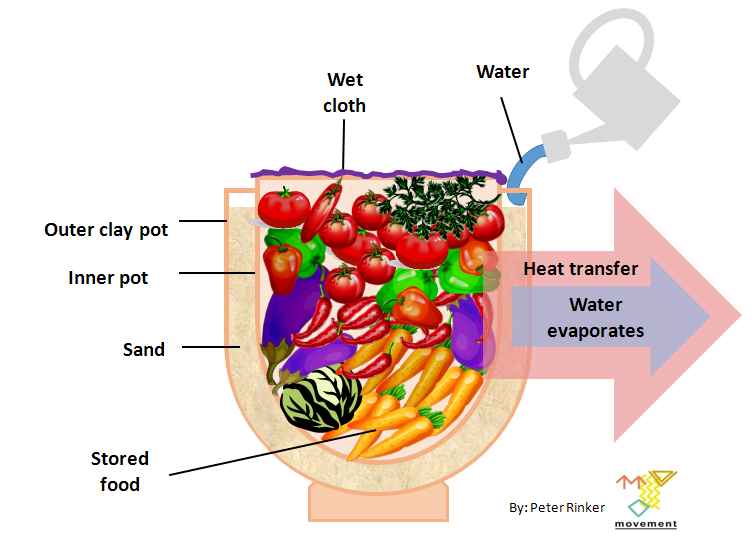
The Zeer pot arrangement works better in a dry, arid climate. Also, the process of evaporation is faster when there is less humidity in the air.
In case you do not have two pots, you can try the process using a single pot as well. The best thing about the arrangement is, it does not need any form of fuel or a power source. While the overall simplicity makes it an attractive option, don’t expect temperatures to get as cold as in refrigerators.
Drying the Food
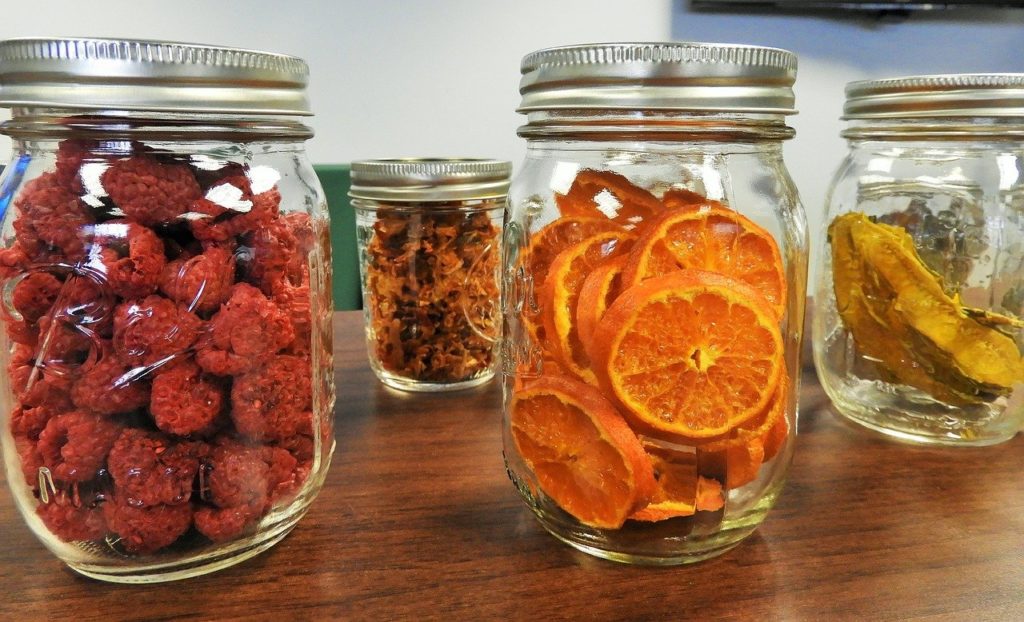
This method is more along the lines of preservation not cooling but it’s still a good method to keep food fresh when the power is out. Let us assume your survival garden is flourishing. But without a working refrigerator, storing and preserving the products will be a problem. One simple but effective way of preserving fruits and vegetables is by drying them under the sun.
In most cases, temperatures between 50 degrees and 55 degrees Fahrenheit are ideal for storing vegetables like pumpkins and sweet potatoes. But they also need lower humidity levels. However, once dried, they can be stored for longer periods. These also include other vegetables like peas, pods, celery, root vegetables, and herbs.
Before drying, the food items need to be prepared properly. This can involve mashing it to a pulp or cutting it into smaller pieces. Chopped vegetables can also be hung for some period under the sun for drying.
Fruits like apricots, peaches, and apples can be mashed and then spread in a thin layer over a flat surface. This can be dried under the sun. Other fruits and vegetables can be chopped or cubed and kept under the sun after being spread one layer deep. Occasional turning can make the process more effective.
Drying can preserve most of the nutrients in the food and also allows you to use these items off-season. But once dried, the items need to stay dry. It is best to store the fully dried fruits and vegetables in airtight jars or cans.
Storing Food Items Underground
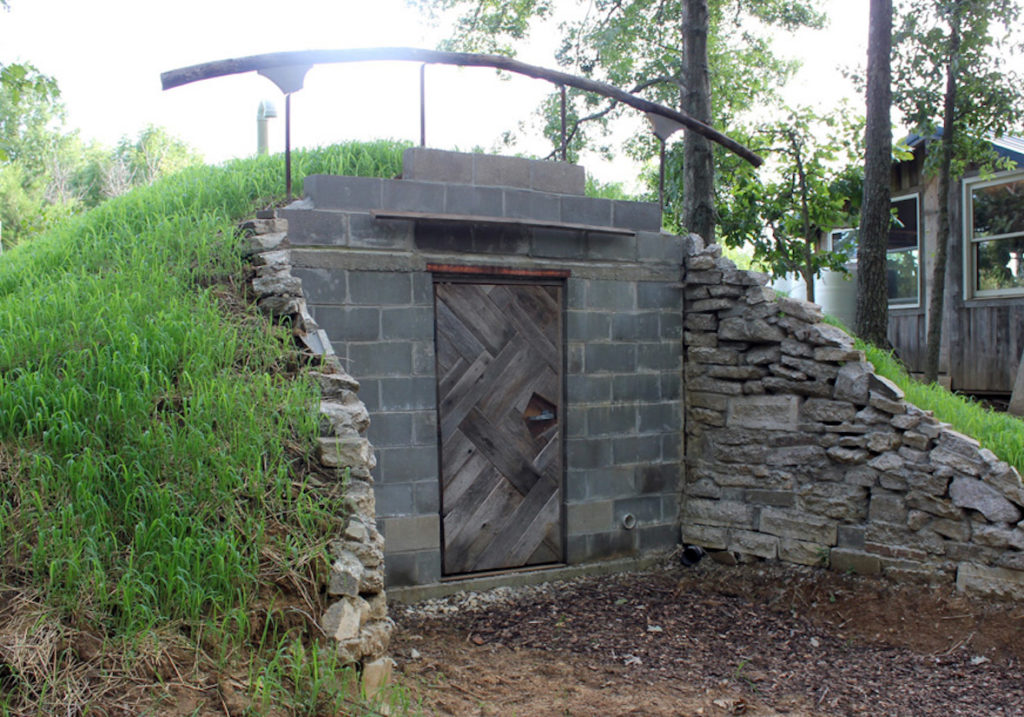
One of the easiest ways of preserving food is storing it underground. The idea of using a root cellar is quite ancient. There are many houses in farm families which have special underground chambers for storage. Some people even used deep wells to store food items.
In reality, just a few feet under the ground, the temperature remains within the comfortable range of 45 and 55 degrees Fahrenheit. Also, the humidity levels are closer to that found in a refrigerator. Besides, such a chamber can be functional in any weather.
This can work well for perishable items like milk, cheese, and yogurt. It is also effective for vegetables like potatoes, carrots, and beans.
If you are digging a storage hole in your bug-out location, try to choose a north-facing slope as it will receive less sunlight ( in the northern hemisphere). In case the land is flat, pick a shady area. The depth of the excavation can be anywhere between 6 to 12 feet.
Then, you can pour some cement into the floor. Finally, you can work on the sidewalls and the roof to ensure rainwater does not make its way into the chamber.
Using Running Water
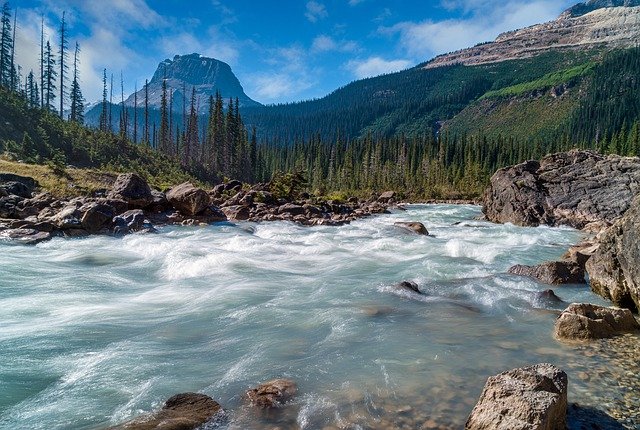
Having a small stream or the runoff from melting snow flowing through your property can be a big plus. Quite simply, you can use it to keep food items cool very easily. This is a practical method that has been used by survivalists for years.
Evaporation is the reason that makes running water cooler. White water that flows over rocks has more surface area exposed to the atmosphere. This makes the process of evaporation even faster. As a result, the water temperature is much cooler than the surroundings.

Before you use this method, make sure to put your food items in a container. That way, fish or other aquatic creatures will not be able to reach it. It will also prevent any contamination of the food in case the water is polluted. You may also need to tie down the container to prevent it from being carried away by the current.
Use the Solar Oven for Cooling
This might surprise you, but the solar oven that you use for heating the food can also be used for cooling? In fact, solar power-driven cold storage units can be used effectively in places where there are long hours of clear weather.
The reflectors in a solar oven collect the solar heat during the daytime. The same reflectors can be left exposed to the clear night sky to give out the heat. Here, the night sky works as a heat sink to draw away the heat from the oven.
For best results, it should be placed on open ground, away from trees and buildings. Most importantly, it should be a cloudless, clear night for this method to work.
You can place two transparent polythene bags filled with water inside the oven. You can even place food items directly into it. Before the sun comes up, you can retrieve the bags with cold water or even ice. You can use this cold water or ice along with some insulation to preserve your food items during the daytime.
On the whole, the process is very simple and the results can be quite effective. Water can be cooled to 20º F or lower by using this method.
Build an Evaporative Cooling Box
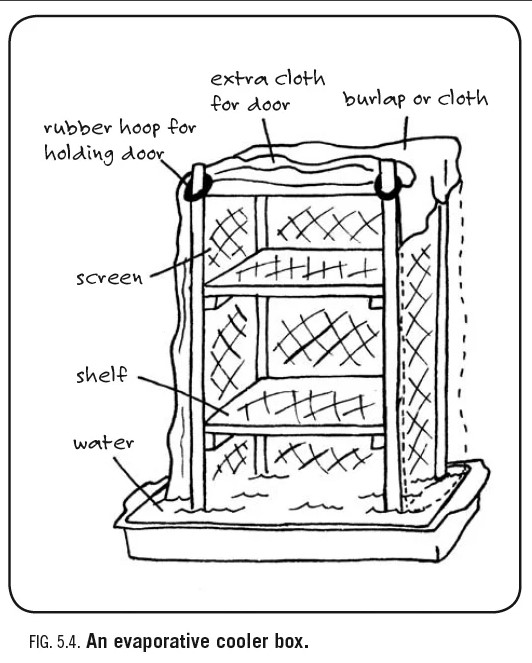
We have already spoken about the Zeer pot. But if you need something larger, this evaporative cooling box can be your next DIY project. It works on the same principle of evaporative cooling. The food items are kept on the trays and the whole structure can be placed on a tray of water. As the water evaporates, it cools the box.
The box frame can be built out of scrap wood or bamboo. The side walls can be made from screen or wire mesh for better air circulation. Then you can add the number of shelves as per your requirement. Since such a unit has a limited cooling capacity, do not make it too large. You can also use a plastic shelving unit to create the entire arrangement.
The door can be made from a separate structure and hinged to the top or the side of the box. Lastly, the box can be covered by a piece of cloth. Next, wet the cloth and secure it with some clips.
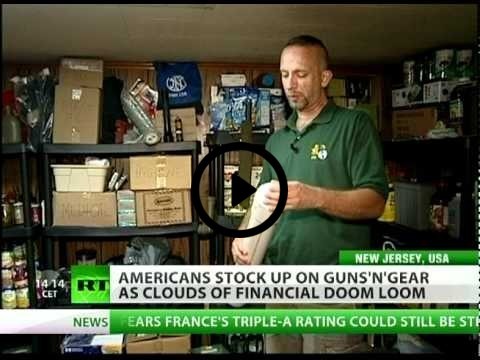
While this arrangement will not provide extensive cooling, it can bring down the temperature inside the box by 15º F at best. Still, it can slow down the growth of bacteria in the food items and keep them fresh for longer periods. For the best performance, keep it in a place with sufficient air movement and less humidity.
Conclusion
Storing food without a refrigerator sounds impossible at first. However, by using these simple methods, you can easily keep your emergency food supply fresh for longer hours. Beyond that, it is also important to stock your food in the right manner. Basically, you need to strike the right balance between perishable and non-perishable food items.
So even when the grid fails, you can preserve your emergency stockpile with a few easy steps. Once that is done, you will feel confident enough to handle the other challenges of an emergency situation.
Best get started with it.
source ; Guest Contributor

